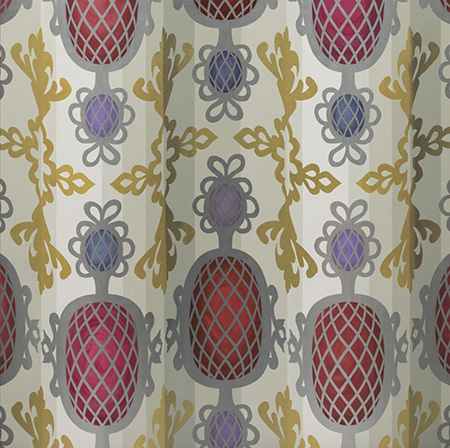
When you listen to a poem being recited, do you hear a succession of pleasing sounds or a probing inquiry into the human condition? Is an opera aria a collection of notes produced by a well-trained voice, or is it the catharsis of a gut-wrenching plot? Likewise in visual art, is a painting an amalgamation of colors and surface effects or a vehicle towards transcendence? These meta-aesthetic questions cut to the heart of the chasm between form and content — and between those of us who consider art primarily as a sensual experience and those who view it conceptually. It's easy to stigmatize formalists and sensation aficionados as philistines, while speculating that those who take a headier approach are relating to artwork more deeply. But this isn't necessarily the case.
I mulled these questions after a studio visit this spring with an artist whose work I respect, Matt O. Cosby. During the visit Cosby said something I may never have heard an artist utter: "I make shallow paintings." He said it light-heartedly, and I don't know whether he was serious, but the comment surprised and delighted me regardless. Personally, I don't find Cosby's paintings of baubles, bric-a-brac, crystals, geodes and gemstones particularly shallow; the inducement of retinal pleasure as an end in itself is as noble a calling as any. Dave Hickey has been celebrating this impulse for decades. But admitting superficiality is not something one learns in art school. This is precisely why I found the comment refreshing.
Content, after all, has always presented a quandary. Why must we insist on cumbersome things like ideas when we could simply revel in pretty colors and nifty surfaces? There is a certain appeal to artwork that is or appears to be vapid: the allure of reflective surfaces, of glitter and metallic leaf, polished chrome and mirrors and gizmos that glint and gleam. What can you say, really, about Anish Kapoor's "Cloud Gate" except that it's big and shiny and looks like a bean? We are suckers for shiny objects and pretty patterns, ergo Jeff Koons, Marilyn Minter and Beatriz Milhazes. We drool and coo at the murrine-glass vessels of Australian artist Giles Bettison and the diamond-encrusted skull of Damien Hirst's "For the Love of God." Curb appeal counts for something. I understand this. I recognize my appetite for it. I love Takashi Murakami's smiley faces and Mickalene Thomas' sequin-bedazzled portraits. I always preferred Sam Francis' paintings to Jackson Pollock's because the colors are happier. I'd rather stare at the mask of Tutankhamon or the British Crown Jewels than read Chekhov. I even believe in skill, craftsmanship, and beauty. Maybe that's shallow.
Sometimes when I give talks at art schools I tell the students: Look at a wooden panel before you gesso it, the narrative of a tree's life, told in rings and knots, sapwood, hardwood, and pith. Listen to the story it sings of the soil from which it sprang, the animals that crawled through its innards or scampered across its branches, the birds that sang from its boughs, the wind that sighed through its thousand-thousand leaves. When you coat that piece of wood with gesso and dare to make a mark upon it, can you tell a story more poignant than the bare panel already tells? If you can't, don't pick up the paintbrush. How about raw pigments all lined up in copper bowls in a bazaar? Can you mix them and create something more pleasing than the sight of all those powdered pigments undefiled? If not, consider a different career. If you think you have what it takes, give it a try. It's harder than it looks.
Ideally art integrates form and content and dually engages our sensory and conceptual faculties. "Guernica" is a compositional tour de force; it's also a harrowing depiction of war. Peter Halley's geometric paintings are a veritable candy shop of delectable color and nubby textures; they also critique urban life and digital technology. It is possible but fiendishly difficult for an artist to embed content seamlessly within formal parameters perfectly suited to the task. It is a worthy goal but not a given, and we should certainly not stigmatize those who seek different paths. In visual art, as in disciplines such as architecture and film, the dialectic between form and content may prove to be not so much a chasm as a continuum.
